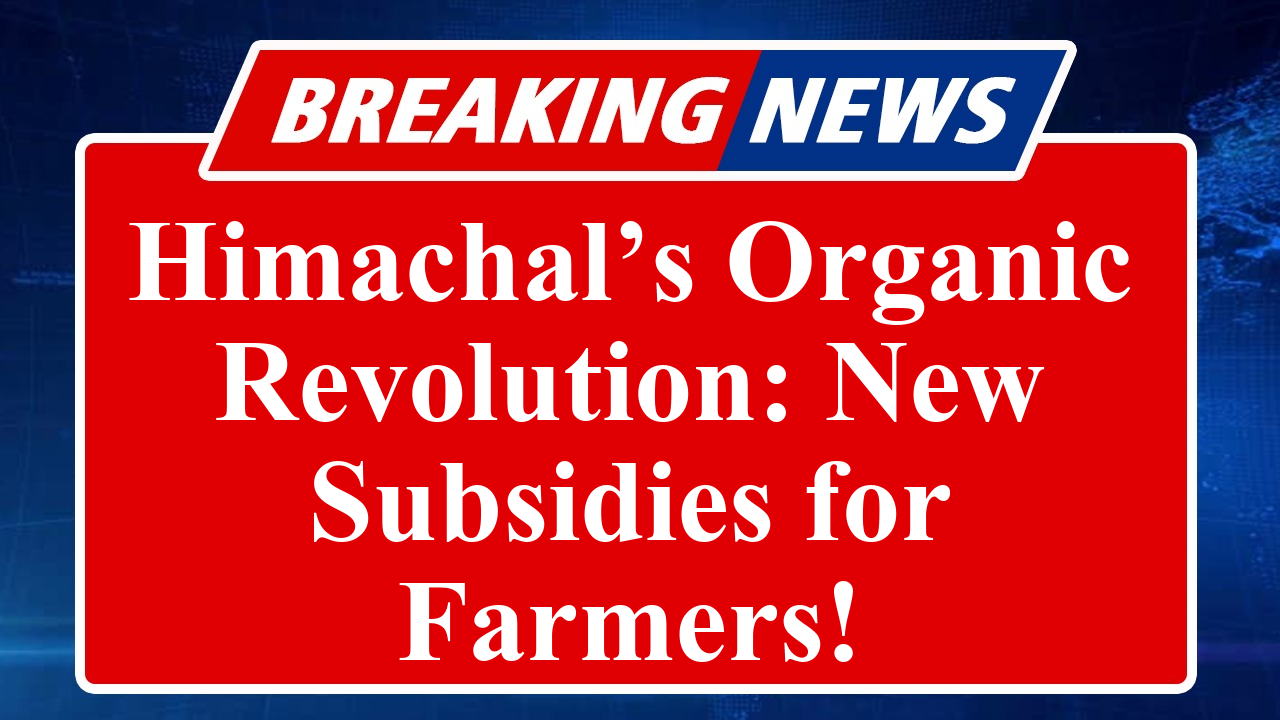Himachal Pradesh has launched a new subsidy scheme to promote organic farming, offering financial aid and training to farmers. Aimed at reducing chemical use and enhancing sustainability, the initiative includes support for organic certification and market access. The scheme aligns with India’s broader push for eco-friendly agriculture, targeting improved soil health and farmer profitability.
Himachal’s New Scheme to Drive Organic Farming Revolution
The Himachal Pradesh government has unveiled a transformative subsidy scheme to accelerate the adoption of organic farming across the state, aligning with India’s national push for sustainable agriculture. Announced in June 2025, the initiative aims to reduce dependency on chemical fertilizers and pesticides, promote eco-friendly practices, and enhance farmer profitability through organic produce. The scheme is part of a broader effort to address environmental concerns, improve soil health, and meet the growing demand for chemical-free food.
Under the new scheme, farmers will receive financial assistance to transition to organic farming, with subsidies covering costs for organic inputs like bio-fertilizers, compost, and pest management solutions. Reports indicate that the state has allocated substantial funds to support this initiative, though exact figures remain undisclosed in recent updates. The scheme also includes training programs to educate farmers on organic techniques, such as crop rotation, green manure, and vermicomposting, ensuring a smooth shift from conventional methods.
A key feature of the program is the establishment of organic clusters, where groups of farmers will collaborate to produce and market organic goods. These clusters will be supported by bio-resource centers in each district, providing access to organic inputs and technical guidance. Additionally, the government is facilitating organic certification processes to help farmers gain credibility in domestic and international markets, where demand for organic produce is surging.
Himachal’s apple farmers, particularly in districts like Una, are already seeing success with organic practices. For instance, low-chill apple varieties are being cultivated organically, redefining the state’s fruit map and fetching premium prices. The state’s horticulture department is also promoting drip irrigation and other technologies to enhance organic farming efficiency, with farmers like Hariman Sharma leading the way in low-altitude apple cultivation.
The scheme comes at a time when India is grappling with the environmental fallout of chemical-intensive farming. Excessive use of urea and other fertilizers has led to soil degradation and water contamination, prompting the central government to advocate for organic alternatives. Himachal’s initiative draws inspiration from national programs like the Paramparagat Krishi Vikas Yojana (PKVY), which supports organic farming through cluster-based approaches and financial aid of Rs. 4,000 per year for farmers.
Challenges remain, including the high initial costs of transitioning to organic methods and the need for robust market linkages. Experts suggest that direct benefit transfers (DBT) for subsidies, as proposed by Vice President Jagdeep Dhankhar, could empower farmers to make independent decisions, further boosting the scheme’s impact. The state is also exploring partnerships with organic startups to ensure farm-to-table supply chains, especially in urban markets.
Himachal’s push for organic farming is not just an agricultural reform but a step toward sustainable development, aligning with global trends in regenerative agriculture. By fostering eco-conscious practices, the state aims to secure its farmers’ livelihoods while contributing to India’s climate action goals.
Disclaimer: This article is based on recent news reports, government announcements, and insights from agricultural experts. Information is sourced from credible outlets like The Hindu, Times of India, and Indian Express. Readers are advised to verify details with official government sources for the latest updates on the subsidy scheme.

